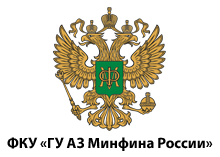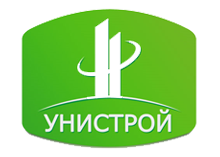The program and technique of testing vessels. Technical survey
They present an increased danger, since the medium in them is under an excess pressure exceeding 0.7 atm. Most often they explode when the permissible pressure is exceeded. All devices operating under increased pressure after manufacture and installation undergo an appropriate test and hydraulic tests. At visual inspection pay attention to tightness of seams, integrity of welded, riveted, bolted connections, absence of corrosion. Inspection of devices is carried out at least once in 4 years. Hydraulic testing is performed by filling the device with water at a pressure of 1.25-1.5 times the working pressure and holding for 10-30 minutes. At the same time pay attention to the appearance of deformations, drips and drops of water on the outer part of the apparatus. It is desirable to pay attention to the pressure loss in the apparatus by the manometer. Hydraulic tests are conducted at least once every 8 years. After installation and testing of the apparatus, which are carried out in the presence of the state supervision, the registration number, the permissible pressure, the date of the subsequent test are applied to the apparatus with the paint. The device must be equipped with a manometer, shut-off valves. Place such devices on the street or in separate buildings.
To ensure the stable and safe operation of pressure vessels, they are subjected to a technical examination: internal inspection and hydraulic testing before commissioning, periodically during operation and ahead of schedule. Vessels registered in the supervisory bodies are checked by the boiler inspector. If the design features of the vessel do not allow for an internal inspection, it is replaced by a hydraulic test, test pressure and inspection in accessible locations. If, however, the hydraulic test proves impossible (say, because of the large stresses caused by the weight of the water in the foundation, between the floor slabs or the vessel itself, the presence inside the vessel of the liner, which prevents filling with water, the difficulty of removing water, etc.), it is permitted to produce pneumatic test (air or inert gas) at the same test pressure. In this case, the pneumatic test (compressed air) is permitted only if satisfactory results are obtained through thorough internal inspection, checking the strength of the vessel by calculation, and carrying out certain safety measures under strict control (taking the valve out of the room where the vessel is being tested, the valve on the filling pipe from the pressure source and pressure gauge , the removal of people to safe places during the test of the vessel trial pressure, etc.). Under the test pressure, the vessel is 5 minutes, after which the pressure is gradually reduced to the working pressure, the vessel is inspected, the density of its seams and detachable joints is checked with soap solution or other effective method. Pressurization of a pressure vessel during a pneumatic test is dangerous and prohibited.
It is permitted not to perform a hydraulic test when technical inspection of new vessels is carried out, if 12 months have not passed since the time of the test carried out at the factory, if they were not damaged during transportation and installation, and they were assembled without welding or soldering elements operating under the pressure.
The rules established that the vessels that are in service and registered with the Gosgortekhnadzor bodies are subject to periodic technical examination by the inspector, including: an internal examination to determine the condition of the internal and external surfaces and the effect of the environment on the vessel walls - at least once every 4 years; hydraulic test with preliminary internal inspection - at least once every 8 years, while it is allowed to use water or other non-corrosive, non-toxic, non-explosive, non-viscous liquids.
Early technical inspection of vessels is necessary after reconstruction and repair with the use of welding or soldering of individual parts working under pressure; if the vessel was inactive for more than 1 year (before the start-up, except for cases of warehouse conservation, in which the examination of the vessels is mandatory before commissioning for more than 3 years); if the vessel has been dismantled and installed in a new location; before applying a protective coating to the vessel walls (if it is produced by its owner); if an early survey is necessary at the discretion of the inspector, the supervisor or the person responsible for the condition and safe operation of the vessel. Periodic and extraordinary technical examination of vessels is performed by the Inspector of the Bolognadzor necessarily in the presence of the employee of the bureau (department) for supervision or another certified engineering and technical worker appointed by the administration, as well as the person responsible for the safe operation of these facilities. In this case, the administration of the enterprise must notify the inspector in advance not less than 10 days in advance of the readiness of the vessel to be inspected. In the event that the inspector for any reason does not appear at the appointed time, the administration has the right to appoint a commission from the experienced, certified specialists for carrying out a technical survey by order of the enterprise. Its results, as well as the date of the next survey, are entered in the passport. A copy of the record is sent to the local Gosgortekhnadzor body no later than 5 days later. The vessel allowed to work must be inspected no later than in 12 months. The administration of the enterprise, in addition to inspections of the inspector, conducts:
internal inspection and hydraulic testing before commissioning of all newly installed vessels, except for those inspected by the inspector;
internal inspection of all registered. and unregistered vessels at least every 2 years, with the exception of vessels that operate in an environment that causes corrosion of the metal and must be inspected internally at least 12 months in advance.
Internal inspection of vessels included in systems with a continuously operating process, with a non-corrosive working environment, which can not be stopped due to production conditions, may be combined with major repairs or replacement of the catalyst, but at least once every 4 years. For internal examinations of vessels, all defects that reduce their strength should be identified and eliminated;
periodic inspection of vessels in working order;
hydraulic test with preliminary internal inspection of vessels not registered in supervisory bodies - at least once every 8 years; early technical inspection of unregistered vessels. When preparing for inspections and hydraulic tests, the vessel should be cooled (warmed up), freed from the filling working medium, disconnected by plugs from all pipelines connecting it with pressure sources or other vessels, cleaned of metal. Lining, insulation and other protection of the surfaces of the vessel are partially or completely removed when there are signs of defects in the metal of the vessel under the protective coating, for example: leakage of linings, gummies in the gummed layer, traces of insulation leakage, etc. All the valves are thoroughly cleaned before the hydraulic test and rubs, and covers, hatches, etc. are installed firmly and tightly, eliminating the possibility of leaks.
Hazardous areas of equipment.
Dangerous area- this is the space in which action on the working dangerous and (or) harmful production factor is possible. The danger is localized in the space around the moving elements: the cutting tools processedparts, faceplates, serrated,belt and chain gears, work tables of machine tools, conveyors, movable hoisting-and-transport machines, loads, etc. A special danger is created in cases when it is possible to capture clothing or hair working with moving parts of equipment.
The presence of a hazardous zone can be caused by the danger of electric shock, exposure to thermal, electromagnetic and ionizing radiations of noise, vibration, ultrasound, harmful vapors and dust gases, the possibility of traumatizing the material of the workpiece and tool by the departing particles during machining, or breakage.
The dimensions of the danger zone in space can be constant (the zone between the belt and the pulley, the zone between the rolls, etc.) and the variables (field of rolling mills, cutting zone when changing the mode and processing nature, changing the cutting tool, etc.).
When designing and operating technological equipment, it is necessary to provide for the use of devices that either exclude the possibility of human contact with a hazardous area or reduce the danger of contact (worker protection equipment). The means of protection of workers by the nature of their application are divided into two categories: collective and individual.
The means of collective protection, depending on the purpose, are divided into the following classes: normalization of the air environment of industrial premises and workplaces, normalization of lighting of industrial premises and workplaces, protection against ionizing radiation, infrared radiation, ultraviolet radiation, electromagnetic radiation, magnetic and electric fields, radiation optical quantum generators, noise, vibration, ultrasound, electric shock, electrostatic charges, from increased
Individual protective equipment, depending on the purpose, is divided into the following classes: insulating suits, respiratory protective equipment, special clothing, special footwear, hand protection, head, face, eyes, hearing protection, fall protection and other similar means, protective dermatological facilities.
All the means of collective protection of workers working in the machine-building industry can be divided into protective, safety, blocking, signaling, and also remote control systems for machines and special ones. Each of the listed subclasses, as will be shown below, has several species and subspecies. The general requirements for the means of protection are: the creation of the most favorable for the human body relationships with the external environment and the provision of optimal conditions for work; high degree of protective effectiveness; accounting for individual features of equipment, tools, devices or technological processes; reliability, durability, convenience of servicing machines and mechanisms, taking into account the recommendations of technical aesthetics.
44. Types of combustion, the mechanisms of combustion processes.
Combustionis a chemical reaction of oxidation, accompanied by the release of heat and light. The occurrence of combustion requires three factors: a combustible substance, an oxidizer (usually oxygen of the air) and a source of ignition (impulse). Oxidizing agent can be not only oxygen, but also chlorine, fluorine, bromine, iodine, oxides of nitrogen, etc.
Depending on the properties of the combustible mixture, combustion is homogeneous and heterogeneous. In homogeneous combustion, the starting materials have the same aggregate state (for example, combustion of gases). Combustion of solid and liquid combustible substances is heterogeneous. -
Combustion is also differentiated in terms of flame propagation velocity and, depending on this parameter, it can be deflagration (of the order of tens of meters per second), explosive (of the order of hundreds of meters per second) and detonation (about thousand meters per second). Fires are characterized by deflagration combustion.
Depending on the ratio of fuel and oxidizer, the processes of combustion of poor and rich combustible mixtures are distinguished. The poormixtures containing an oxidizer in excess are called. Their combustion is limited by the content of the fuel component. TO richinclude mixtures with a fuel content above the stoichiometric ratio of the components. Combustion of such mixtures is limited by the content of the oxidant. The occurrence of combustion is associated with the mandatory self-acceleration of the reaction in the system. There are three main types of self-accelerating chemical reaction in combustion: thermal, chain and combined - chain-thermal. The thermal mechanism of acceleration is associated with the exothermicity of the oxidation process and the increase in the rate of chemical reaction with an increase in temperature under the condition of accumulation of heat in the reacting system.
Chain acceleration of the reaction is associated with the catalysis of chemical transformations, carried out by intermediate products of transformations, which have a special chemical activity and are called active centers. In accordance with the chain theory of the chemical, the process is not by direct interaction of the original molecules, but with the help of fragments formed during the decay of these molecules (radicals, atomic particles).
The actual combustion processes are carried out, as a rule, by a combined chain-thermal mechanism. The process of combustion is divided into several types.
Flash- rapid combustion of the combustible mixture, not accompanied by the formation of compressed gases.
Fire- occurrence of burning iodine by exposure to an ignition source.
Ignition- fire, accompanied by the appearance of a flame.
Spontaneous combustion- the phenomenon of a sharp increase in the rate of exothermic reactions, leading to the burning of a substance (material, mixture) in the absence of an ignition source. The essence and differences between the processes of ignition and spontaneous combustion are explained below.
Self-ignition- spontaneous combustion, accompanied by the appearance of a flame.
Explosion- extremely fast chemical (explosive) transformation, accompanied by the release of energy and the formation of compressed gases capable of producing mechanical work. The combustion of a substance or material can occur at an ambient temperature below the autoignition temperature. This possibility is due to the propensity of substances or materials to oxidation and the conditions of accumulation in them of heat released during oxidation, which can lead to spontaneous combustion. Thus, the occurrence of combustion of substances and materials under the influence of thermal pulses with a temperature above the ignition temperature (or spontaneous combustion) is characterized as ignition, and occurrence. Combustion at temperatures below the autoignition temperature refers to the process of self-ignition. Depending on the pulse, the processes of spontaneous combustion are subdivided into thermal, microbiological and chemical processes.
When evaluating the fire hazard of substances and materials, their aggregate state must be taken into account. Since combustion, as a rule, occurs in a gaseous medium, it is necessary to take into account the conditions under which a sufficient amount of gaseous combustible products is formed for the fire hazard. The main indicators of fire hazard, determining the critical conditions for the occurrence and development of the combustion process, are the autoignition temperature and the concentration limits of ignition.
The autoignition temperature characterizes the minimum temperature of a substance or material at which a rapid increase in the rate of exothermic reactions occurs, resulting in the appearance of a fiery combustion. The minimum concentration of combustible gases and vapors in the air, at which they are able to ignite and spread the flame, is called lower concentration limit of ignition;the maximum concentration of combustible gases and vapors, at which the spread of a flame is still possible, is called the upper concentration limit of ignition.The area of compositions and mixtures of combustible gases and vapors with air lying between the lower and upper limits of ignition is called the ignition region.
Concentration limits of ignition are not constant and depend on a number of factors. The greatest influence on ignition limits is the power of the source of ignition, the admixture of inert gases and vapors, the temperature and pressure of the combustible mixture.
Flash pointcalled the lowest (in the conditions of special tests) temperature of a combustible substance, in which vapors and gases are formed above the surface, capable of flashing in the air from the ignition source, but the rate of their formation is still insufficient for subsequent combustion. Using this characteristic, all combustible fluids can be divided into two classes according to fire danger: the first include liquids with a flash-point up to 61 ° C (gasoline, ethyl alcohol, acetone, sulfuric ether, nitro-enamels, etc.), they are called flammable liquids (LVS); to the second - liquids with a flash-point above 61 ° C (oil, mazut, formalin, etc.), they are called combustible liquids.
Ignition temperature- the temperature of the combustible substance at which it emits combustible vapors and gases at such a rate that after ignition from the ignition source a steady burning occurs.
Temperature limits of ignition- temperatures at which saturated vapors of matter form in the given oxidizing medium concentrations equal to the lower and upper concentration limits of liquid ignition respectively.
LLC "Regional Industrial Strategy" - technical inspection of pressure vessels in Moscow, the Moscow Region and the Republic of Tatarstan (Kazan). Short time. Call.
Technical examination of vessels - is the inspection of equipment (internal and external, in accordance with certain manufacturers-norms) and its hydraulic testing.
Carrying out of physical examination: from 1 day
Technical inspection of the vessels to be registered in Rostekhnadzor is carried out by an authorized specialized organization, as well as by the person responsible for the production control over the operation of pressure vessels, in conjunction with the responsible for good condition and safe operation (para. 383). If the vessels are not subject to Rostekhnadzor account, the person responsible for the production control over the operation of pressure vessels, together with the person responsible for serviceability and safe operation, shall conduct the inspection (paragraph 384).
Specialized organization, - an organization authorized in accordance with the procedure established by the regulatory legal acts of Rostekhnadzor, comprising experts in visual and non-destructive testing of the relevant qualifications, as well as having a set of devices, devices and equipment in the amount necessary to ensure the performance of a technical survey, taking into account the requirements these FNP, manuals (instructions) for the operation of equipment.
UPDATE: Rostekhnadzor explained that specialists engaged in activities related only to the operation of equipment operating under excessive pressure, only attestation is sufficient for the areas associated with the operation of the relevant equipment. Look <Письмо> "On the certification of personnel and specialists in the field of industrial safety."
As a result of successful technical inspection of pressure receptacles, a record is recorded in the technical passport of each equipment - the result of the survey. Such a record includes:
- date of the next survey;
- allowed work parameters;
- the fact of presence or absence of any defects in equipment, indicating their actual location and size.
It should be noted that a copy of this record should be sent to Rostechnadzor for five daysafter a physical examination.
Types of technical examination of vessels, boilers, cylinders
Each of the existing types of technical survey differs from each other in time and degree of inspection.
Procedure for technical inspection
The procedure for the technical inspection of pressure vessels is:
- verification of all documents for equipment;
- execution of the inspection (external and / or internal) provided by the manufacturer;
- carrying out hydraulic testing.
It is important to understand that technical inspection of vessels according to Federal Law No. 116 of 21.07.1997 "On industrial safety of hazardous production facilities" is an obligatory procedure. Failure to comply with this requirement will entail consequences, up to and including the imposition of an administrative fine on the employee of the enterprise or on the organization itself.
 |
 |
|
|
| At your service more than 20 best professionals in the field of industrial safety. | We are focused on the quality of work. All works have a warranty. | OOO RPM was founded in 2000 and for the time of its activity has firmly won the trust of its customers. |
We precisely observe terms. And most importantly, we are much faster. |
Periodicity of TO maintenance of pressure receptacles
The periodicity, scope and methods of technical certification of boilers must be determined by the manufacturer, and also specified in the operating manual (instructions). In the absence of such instructions, the frequency of the technical survey shall be established by Annex No. 4 of the Rostechnadzor Order No. 116 of March 25, 2014.
If the maintenance is not carried out in a timely manner or was never carried out, then it is necessary to stop the production of work with this equipment. It should be noted that in case of an unscheduled or scheduled inspection, Rostekhnadzor can prescribe and fine.
| Name | External and internal inspections | Hydraulic test pressure test |
|---|---|---|
| Being in service and not subject to registration in the bodies of Rostechnadzor | ||
| 2 years | 8 years | |
| 12 months | 8 years | |
|
Subject to registration in the bodies of Rostechnadzor |
||
| Vessels working with a medium that causes destruction and physico-chemical transformation of the material at a speed of not more than 0.1 mm / year | 4 years | 8 years |
| Vessels working with a medium that causes destruction and physico-chemical transformation of the material at a rate of more than 0.1 mm / year | 4 years | 8 years |
| Sulphite cooking boilers and hydrolysis units with internal acid-resistant lining | 5 years | 10 years |
| Regenerative heaters of high and low pressure, boilers, deaerators, receivers and expanders of blowdown of power plants | Internal inspection and hydraulic testing after two major repairs, but at least once every 12 years | |
| Vessels in the production of ammonia and methanol, causing destruction and physico-chemical transformation of the material at a speed of no more than 0.5 mm / year | 8 years | 8 years |
| Heat exchangers with a sliding pipe system of petrochemical enterprises operating at a pressure higher than 0.07 to 100 MPa, with a medium that causes destruction and a physico-chemical transformation of the material at a rate of not more than 0.1 mm / year | 12 years | 12 years |
| Heat exchangers with a sliding pipe system of petrochemical enterprises operating at pressures above 0.07 to 100 MPa, with a medium that causes destruction and a physico-chemical transformation of the material at a rate of more than 0.1 to 0.3 mm / year | 8 years | 8 years |
| Vessels of petrochemical enterprises working with a medium that causes destruction and physico-chemical transformation of the material at a rate of not more than 0.1 mm / year | 6 years | 12 years |
| Vessels of petrochemical enterprises working with a medium that causes destruction and physico-chemical transformation of the material at a rate of more than 0.1 to 0.3 mm / year | 4 years | 8 years |
| Vessels of petrochemical enterprises working with a medium that causes destruction and physico-chemical transformation of the material at a rate of more than 0.3 mm / year | 4 years | 8 years |
our clients
 |
 |
 |
 |
 |
 |
 |
 |
 |
 |
 |
 |
Call and experts will conduct a physical examination of your blood pressure vessels in Moscow and the Moscow region.
- Order of Rostekhnadzor of March 25, 2014 N 116 "On Approval of Federal Norms and Regulations in the Field of Industrial Safety" Industrial Safety Rules for Hazardous Production Facilities Using Equipment Operating Under Excessive Pressure "
- PB 03-440-02 "Rules for the certification of personnel in the field of nondestructive testing" (approved by Resolution of Rostechnadzor of January 23, 2002 No. 3)
- GOST 24755-89 "Vessels and Apparatus - Norms and Methods for Calculating Strength Strength of Holes"
- GOST 25859-83 "Vessels and steel appliances - Norms and methods for calculating strength for low-cycle loads"
- GOST 14249-89 "Vessels and Apparatus - Norms and Methods for Calculating Strength"
- <Письмо> Rostechnadzor of 07/07/2016 N 09-00-12 / 4480 "On the certification of personnel and specialists in the field of industrial safety"
Check in. Registration in the bodies of Rostekhnadzor is not subject to: - vessels operating at a wall temperature of no higher than 200 ° C, for which the pressure does not exceed 0.05 MPa; - apparatuses of air separation plants located inside the heat-insulating casing (regenerators, columns, heat exchangers); - barrels for transportation of liquefied gases, cylinders with a capacity of up to 100 liters. Registration is carried out on the basis of a written application of the management of the organization-owner of the vessel. For the registration of the vessel must be submitted: - the passport of the vessel; - certificate of completion of installation; - scheme of inclusion of the vessel; - safety valve certificate. The body of Rostechnadzor within 5 days of consideration. submitted documentation. When the documentation is complied with the vessel in the passport of the vessel, the registration stamp is stamped, the documents are sealed. In the case. refusal ukaz. reasons with reference to the relevant documents.
20. Technical inspection of pressure vessels
With the technical examination of vessels it is allowed to use all methods of nondestructive testing. Primary and extraordinary wire. Inspector of Rostechnadzor. The wire. Outside. And int. Inspections. Also wire. Pneumatic. And the hydraulic test - check the strength of the elements of the vessel and the density of the joints. Vessels working with hazardous substances of hazard classes 1 and 2 before the start of work inside the work must be carefully processed. An extraordinary examination of the vessels is carried out: - if the vessel has not been operated for more than 12 months; - if the vessel has been dismantled and installed in a new location; - after repair; - after working out the design life of the vessel; - after a vessel accident; - at the request of the inspector. The results of the technical survey carried out are entered in the vessel's passport and signed by the commission members.
21. Hydraulic and pneumatic testing of pressure vessels
Hydraulic test all vessels are subject to their manufacture. Vessels, the manufacture of which ends at the installation site, transported to the installation site by parts, are subjected to a hydraulic test at the installation site. Vessels having a protective coating or insulation are subjected to a hydraulic test before coating is applied. Hydraulic testing of vessels, with the exception of castings, must be carried out by test pressure. Applied. water with a temperature of at least 5 ° C and not above 40 ° C. The test pressure shall be controlled by two pressure gauges. After exposure to the test pressure, the pressure is reduced to the design pressure at which the external surface of the vessel, all its detachable and welded joints, is inspected. The vessel is considered to have withstood a hydraulic test if it is not found: - leaks, cracks, tears, sweats in welded joints and on the base metal; - leaks in plug-in connections; - visible residual deformations, pressure drop on the manometer. The hydraulic test may be replaced by a pneumatic test provided that this test is controlled by the acoustic emission method. Pneumatic testing must be carried out by instruction with compressed air or an inert gas. Time of exposure of the vessel under test pressure is established by the developer of the project, but should be at least 5 minutes. Then, the pressure in the test vessel must be reduced to the design pressure and the vessel inspected. The test results are entered in the vessel's passport.
font size
RULES OF DEVICE AND SAFE OPERATION OF VESSELS WORKING UNDER PRESSURE-PB 10-115-96 (in accordance with the Resolution ... Actual in 2017
6.3. Technical survey
6.3.1. Vessels covered by these Regulations must undergo technical examination after installation, before commissioning, periodically during operation and, if necessary, for an extraordinary survey.
6.3.2. The scope, methods and frequency of technical vascular examinations (except for cylinders) must be specified by the manufacturer and specified in the operating manuals.
dd. 03.07.2002 No. 41)
In the absence of such instructions, a technical survey should be conducted in accordance with the requirements of Table. 10, 11, 12, 13, 14, 15 of these Rules.
Table 10
PERIODICITY OF TECHNICAL SURVEYS OF VESSELS IN OPERATION AND NOT SUBJECT TO REGISTRATION IN ORGANS OF GOSGORTEHNADZOR OF RUSSIA
Table 11
PERIODICITY OF TECHNICAL SURVEYS OF VESSELS REGISTERED IN ORGANS OF GOSGORTEHNADZOR OF RUSSIA
from 09/02/97 N 25 , dd. 03.07.2002 No. 41)
| N п / п | Name | |||
| 1 | 2 | 3 | 4 | 5 |
| 1 | Vessels working with a medium that causes destruction and physico-chemical transformation of the material (corrosion, etc.) at a speed of not more than 0.1 mm / year | 2 years | 4 years | 8 years |
| 2 | 12 months | 4 years | 8 years | |
| 3 | Vessels buried in the ground, designed to store liquid petroleum gas with a hydrogen sulfide content of not more than 5 g per 100 cubic meters. m, and vessels isolated on a vacuum basis and intended for transportation and storage of liquefied oxygen, nitrogen and other non-corrosive cryogenic liquids | 10 years | 10 years | |
| 4 | Sulphite cooking boilers and hydrolysis units with internal acid-resistant lining | 12 months | 5 years | 10 years |
| 5 | Multilayered gas storage tanks installed in automobile gas filling compressor stations | 10 years | 10 years | 10 years |
| 6 | Regenerative heaters of high and low pressure, boilers, deaerators, receivers and expander purge of power plants of the Ministry of Fuel and Energy of Russia | After each major overhaul, but at least once every 6 years | Internal inspection and hydraulic testing after two major repairs, but at least once every 12 years | |
| 7 | Vessels in ammonia and methanol production, working with a medium that causes destruction and physico - chemical transformation of the material (corrosion, etc.) at a speed, mm / year: | 12 months | 8 years | 8 years |
| not more than 0,1 | 8 years | 8 years | 8 years | |
| from 0,1 to 0,5 | 2 years | 8 years | 8 years | |
| more than 0.5 | 12 months | 4 years | 8 years | |
| (in the edition of the Decree of the State Mining and Technical Inspectorate of the Russian Federation from 09/02/97 N 25) | ||||
| 8 | Heat exchangers with a sliding pipe system of petrochemical enterprises operating at pressures above 0.7 kgf / sq. cm up to 1000 kgf / sq. cm, with a medium that causes destruction and physico-chemical transformation of the material (corrosion, etc.), not more than 0.1 mm / year | 12 years | 12 years | |
| 9 | Heat exchangers with a sliding pipe system of petrochemical enterprises operating at pressures above 0.7 kgf / sq. cm up to 1000 kgf / sq. cm, with a medium that causes destruction and physicochemical transformation of the material (corrosion, etc.) at a rate of more than 0.1 mm / year to 0.3 mm / yr | After each extraction of the pipe system | 8 years | 8 years |
| 10 | Vessels of petrochemical enterprises working with a medium that causes destruction and physicochemical transformation of the material (corrosion, etc.) at a speed of not more than 0.1 mm / year | 6 years | 6 years | 12 years |
| 11 | Vessels of petrochemical enterprises working with a medium that causes destruction and physico-chemical transformation of the material (corrosion, etc.) at a rate of more than 0.1 mm / year to 0.3 mm / yr | 2 years | 4 years | 8 years |
| 12 | Vessels of petrochemical enterprises working with a medium that causes destruction and physicochemical transformation of the material (corrosion, etc.) at a speed of more than 0.3 mm / year | 12 months | 4 years | 8 years |
Notes. 1. Technical inspection of buried vessels with a non-corrosive medium, as well as with a liquid petroleum gas with a hydrogen sulfide content of not more than 5 g / 100 m, can be carried out without releasing them from the ground and removing the external insulation provided that the thickness of the vessel walls is measured by a non-destructive monitoring method. Measurements of the thickness of the walls should be made according to instructions specially designed for this purpose.
2. Hydraulic testing of sulphite cooking boilers and hydrolysis apparatus with internal acid-resistant lining may not be performed provided that the metal walls of these boilers and apparatus are checked by ultrasonic flaw detection. Ultrasound defectoscopy should be performed during the period of their overhaul by an organization that has the permit (license) of the state technical inspection bodies, but at least once every five years, by instructions in the volume of at least 50% of the surface of the metal of the hull and at least 50% of the length of the seams, so that 100 % ultrasonic monitoring was carried out at least every 10 years.
3. Vessels made with the use of composite materials buried in the ground are inspected and tested according to a special program specified in the passport for the vessel.
Table 12
PERIODICITY OF TECHNICAL SURVEYS OF TANKS AND BARRELS IN THE OPERATION AND NOT SUBJECT TO REGISTRATION IN THE ORGANS OF GOSGORTEHNADZOR OF RUSSIA
(in the edition of the Decree of the State Mining and Technical Inspectorate of the Russian Federation from 09/02/97 N 25)
| N п / п | Name | External and internal inspections | |
| 1 | 2 | 3 | 4 |
| 1 | Tanks and barrels that do not have a vacuum isolation, in which the pressure is higher than 0.07 MPa (0.7 kgf / cm2), is periodically created for emptying | 2 years | 8 years |
| (in the edition of the Decree of the State Mining and Technical Inspectorate of the Russian Federation from 09/02/97 N 25) | |||
| 2 | Vessels working with a medium that causes destruction and physico-chemical transformation of the material (corrosion, etc.) at a rate of more than 0.1 mm / year | 4 years | 4 years |
| 3 | Barrels for liquefied gases causing destruction and physico-chemical transformation of the material (corrosion, etc.) at a rate of more than 0.1 mm / year | 2 years | 2 years |
| 4 | Tanks and barrels having vacuum insulation in which the pressure is higher than 0.07 MPa (0.7 kgf / cm2) is created periodically for emptying them | 10 years | 10 years |
| (in the edition of the Decree of the State Mining and Technical Inspectorate of the Russian Federation from 09/02/97 N 25) | |||
Table 13
PERIODICITY OF TECHNICAL SURVEYS OF TANKS IN OPERATION AND REGISTERED IN GOSGORTEHNADZOR ORGANS OF RUSSIA
(in the edition of the Gosgortechnadzor of the Russian Federation from 09/02/97 N 25 , dd. 03.07.2002 No. 41)
| N п / п | Name | responsible for the implementation of production control (Article 6.3.3) | A specialist of an organization that has a license of the Gosgortekhnadzor of Russia (Article 6.3.3) | |
| external and internal inspections | external and internal inspections | hydraulic test pressure test | ||
| 1 | 2 | 3 | 4 | 5 |
| 1 | Tank trucks for transportation of propane - butane and pentane | 10 years | 10 years | |
| 2 | Tanks railway, isolated on the basis of vacuum | 10 years | 10 years | |
| (in the edition of the Decree of the State Mining and Technical Inspectorate of the Russian Federation from 09/02/97 N 25) | ||||
| 3 | Railroad cisterns made of 09G2S and 10G2SD steels that have been heat-treated in assembled form and intended for transportation of ammonia | 8 years | 8 years | |
| 4 | Tanks for liquefied gases causing destruction and physico-chemical transformation of the material (corrosion, etc.) with a speed of more than 0.1 mm / year | 12 months | 4 years | 8 years |
| 5 | All other tanks | 2 years | 4 years | 8 years |
Table 14
PERIODICITY OF TECHNICAL SURVEYS OF CASES THAT HAVE BEEN USED AND NOT SUBJECT TO REGISTRATION IN ORGANS OF GOSGORTEHNADZOR OF RUSSIA
(in the edition of the Decree of the State Mining and Technical Inspectorate of the Russian Federation from 09/02/97 N 25)
| N п / п | Name | External and internal inspections | Hydraulic test pressure test |
| 1 | 2 | 3 | 4 |
| 1 | Cylinders in service for filling with gases causing destruction and physico-chemical transformation of the material (corrosion, etc.): | ||
| with a speed not exceeding 0.1 mm / year; | 5 years | 5 years | |
| with a speed of more than 0.1 mm / year | 2 years | 2 years | |
| 2 | Cylinders intended for fueling engines of vehicles on which they are installed: | ||
| a) for compressed gas: | |||
| made of alloy steels and metal-composite materials; | 5 years | 5 years | |
| made of carbon steels and metal-composite materials; | 3 years | 3 years | |
| made of non-metallic materials; | 2 years | 2 years | |
| b) for liquefied gas | 2 years | 2 years | |
| 3 | Cylinders with a medium that causes destruction and physical and chemical transformation of materials (corrosion, etc.) at a rate of less than 0.1 mm / year, in which a pressure above 0.07 MPa (0.7 kgf / cm2) is created periodically for their emptying | 10 years | 10 years |
| 4 | Cylinders installed permanently, as well as permanently mounted on mobile means, which store compressed air, oxygen, argon, nitrogen, helium with a dew-point temperature of -35 deg. C and below, measured at a pressure of 15 MPa (150 kgf / sq. Cm) and above, as well as cylinders with dehydrated carbon dioxide | 10 years | 10 years |
| 5 | Cylinders intended for propane or butane, with a wall thickness of at least 3 mm, with a capacity of 55 liters, with a corrosion rate of not more than 0.1 mm / year | 10 years | 10 years |
| (in the edition of the Decree of the State Mining and Technical Inspectorate of the Russian Federation from 09/02/97 N 25) | |||
Table 15
PERIODICITY OF TECHNICAL SURVEYS OF CASES REGISTERED IN ORGANS OF GOSGORTEHNADZOR OF RUSSIA
(in the edition of the Decree of the State Mining and Technical Inspectorate of the Russian Federation dd. 03.07.2002 No. 41)
| N п / п | Name | responsible for the implementation of production control (Article 6.3.3) | A specialist of an organization that has a license of the Gosgortekhnadzor of Russia (Article 6.3.3) | |
| external and internal inspections | external and internal inspections | hydraulic test pressure test | ||
| 1 | Cylinders installed permanently, as well as permanently mounted on mobile means, which store compressed air, oxygen, nitrogen, argon and helium with a dew-point temperature of -35 deg. C and below, measured at a pressure of 15 MPa (150 kgf / sq. Cm) and above, as well as cylinders with dehydrated carbon dioxide | 10 years | 10 years | |
| 2 | All other cylinders: | |||
| with a medium that causes destruction and physico-chemical transformation of materials (corrosion, etc.) at a speed of not more than 0.1 mm / year | 2 years | 4 years | 8 years | |
| with a medium that causes destruction and physico-chemical transformation of materials (corrosion, etc.) with a speed of more than 0.1 mm / year | 12 months | 4 years | 8 years | |
If, under the conditions of production, it is not possible to produce a vessel for examination at the appointed time, the owner must present it ahead of time.
The inspection of cylinders should be carried out according to the methodology approved by the developer of the cylinder design, in which the frequency of the survey and the rate of rejection should be indicated.
At technical survey it is allowed to use all methods of nondestructive testing, including the method of acoustic emission.
6.3.3. Technical inspection of vessels that are not registered in the Gosgortechnadzor of Russia is carried out by the person responsible for the implementation of industrial control over compliance with industrial safety requirements for the operation of vessels.
(in the edition of the Decree of the State Mining and Technical Inspectorate of the Russian Federation dd. 03.07.2002 No. 41)
Primary, periodic and extraordinary technical examination of vessels is carried out by a specialist of an organization licensed by the Gosgortechnadzor of Russia to conduct an expert examination of the industrial safety of technical devices (vessels).
(in the edition of the Decree of the State Mining and Technical Inspectorate of the Russian Federation dd. 03.07.2002 No. 41 )
6.3.4. External and internal examinations are aimed at:
at the initial examination, verify that the vessel is installed and equipped in accordance with these Rules and submitted at registration documents, and that the vessel and its elements are not damaged;
with periodic and extraordinary surveys to establish the integrity of the vessel and the possibility of its further work.
The hydraulic test is designed to check the strength of the vessel elements and the density of the joints. Vessels must be submitted to a hydraulic test with the reinforcement installed on them.
6.3.5. Before the internal inspection and hydraulic test, the vessel must be stopped, cooled (warmed), released from the working medium filling it, disconnected by plugs from all pipelines connecting the vessel to the pressure source or to other vessels. Metal vessels must be cleaned to metal.
Vessels working with harmful substances of the 1st and 2nd hazard classes by GOST 12.1.007-76 , before commencing any work, as well as before the internal inspection, must be subjected to thorough processing (neutralization, degassing) in accordance with the instructions for safe operation approved by the owner of the vessel in accordance with the established procedure.
Lining, insulation and other types of corrosion protection must be partially or completely removed, if there are signs indicating the possibility of defects in the material of the vessel's structural components (leakage of lining, gumming blades, insulation blotch marks, etc.). The electrical heating and the vessel drive must be switched off. In this case, the requirements of clauses 7.4.4, 7.4.5, 7.4.6 of this Regulation shall be met.
6.3.6. Extraordinary examination of vessels in service should be carried out in the following cases:
if the vessel has not been operated for more than 12 months;
if the vessel has been dismantled and installed in a new location;
if the bulges or dents are straightened, as well as the reconstruction or repair of the vessel with the use of welding or soldering elements operating under pressure;
before applying a protective coating to the walls of the vessel;
After a vessel accident or elements working under pressure, if the volume of restoration work requires such an examination;
at the request of the inspector of the Gosgortechnadzor of Russia or responsible for the implementation of industrial control over compliance with industrial safety requirements for the operation of pressure vessels.
(in the edition of the Gosgortechnadzor of the Russian Federation from 09/02/97 N 25 , dd. 03.07.2002 No. 41)
6.3.7. Technical inspection of vessels, tanks, cylinders and barrels can be carried out at special repair and testing points, in the manufacturing organizations, filling stations, as well as in organizations possessing the necessary base, equipment for carrying out the survey in accordance with the requirements of this Regulation.
6.3.8. The results of the technical survey shall be recorded in the vessel's passport by the person who carried out the survey, indicating the permitted parameters for the operation of the vessel and the dates of the next survey.
When conducting an extraordinary survey, the reason that necessitated such an examination should be indicated.
If additional tests and examinations were carried out during the survey, the types and results of these tests and studies with indication of the sampling points or areas subjected to the tests, as well as the reasons that necessitated additional tests, should be recorded in the vessel's passport.
6.3.9. On the vessels recognized during the technical survey suitable for further operation, information shall be affixed in accordance with clause 6.4.4 of this Regulation.
6.3.10. If defects are found at the survey that reduce the strength of the vessel, then its operation can be resolved with reduced parameters (pressure and temperature).
Ability to operate the vessel with reduced parameters should be confirmed by calculation for strength, represented by the owner, at the same time verification of the capacity of the safety valves must be carried out and the requirements of clause 5.5.6 of these Rules are met.
Such a decision is recorded in the vessel's passport by the person conducting the survey.
6.3.11. In case of revealing defects, the causes and consequences of which are difficult to establish, the person who carried out the technical examination of the vessel is obliged to require the owner of the vessel to carry out special investigations and, if necessary, to present the conclusion of a specialized research organization about the causes of defects, as well as the possibility and conditions of further operation of the vessel.
6.3.12. If during the technical examination it turns out that the vessel, due to existing defects or violations of these Rules, is in a condition dangerous for further operation, the operation of such a vessel should be prohibited.
6.3.13. Vessels delivered in assembled form must be preserved by the manufacturer and the operating manual specifies the conditions and terms of their storage. When these requirements are met, only external and internal inspections are performed before starting up, hydraulic testing of the vessels is not necessary. In this case, the period of the hydraulic test is assigned based on the date of issue of the permit for the operation of the vessel.
(in the edition of the Decree of the State Mining and Technical Inspectorate of the Russian Federation dd. 03.07.2002 No. 41)
Containers for liquefied gas before applying insulation on them must be exposed only to external and internal inspections, if the terms and conditions of the manufacturer for their storage have been met.
After installation in the field of operation before filling with soil, these containers can only be subjected to external inspection if no more than 12 months have elapsed since the application of insulation and no welding was used during their installation.
6.3.14. Vessels working under pressure of harmful substances (liquids and gases) of the 1st, 2nd hazard classes according to GOST 12.1.007-76 shall be subjected to a pressure test by the owner of the receptacle with air or an inert gas at a pressure equal to the working pressure. Tests are carried out by the owner of the vessel in accordance with the instructions approved in accordance with the established procedure.
6.3.15. For external and internal examinations, all defects that reduce the strength of the vessels should be identified, with special attention to be paid to identifying the following defects:
on the surfaces of the vessel - cracks, tears, corrosion of the walls (especially at the flanging points and scrapes), bulges, otdulin (mainly in vessels with "shirts", as well as vessels with fire or electric heating), shells (in cast vessels);
In welding seams - welding defects specified in paragraph 4.5.17. Of this Regulation, tears, corrosion;
in riveted seams - cracks between rivets, breaks of heads, traces of omissions, tearing at the edges of riveted sheets, corrosion damage of riveted seams, gaps under the rivets of rivet sheets and rivet heads, especially in vessels operating with corrosive media (acid, oxygen, alkalis, etc. .);
in vessels with corrosion-protected surfaces - destruction of the lining, including leakiness of the layers of lining tiles, cracks in the gummed, lead or other coating, cleavage of the enamel, cracks and blisters in the cladding layer, damages to the metal of the vessel walls in the places of the outer protective coating;
in metalloplastikovyh and nonmetallic vessels - stratification and rupture of reinforcing fibers above the norms established by a specialized research organization.
(in the edition of the Decree of the State Mining and Technical Inspectorate of the Russian Federation from 09/02/97 N 25)
6.3.16. The person carrying out the survey, if necessary, may require the removal (full or partial) of the protective coating.
6.3.17. Vessels with a height of more than 2 m before the inspection must be equipped with the necessary devices to ensure the safe access to all parts of the vessel.
6.3.18. Hydraulic testing of vessels is performed only with satisfactory results of external and internal examinations.
6.3.19. Hydraulic tests should be carried out in accordance with the requirements set out in Sec. 4.6 of this Regulation, with the exception of § 4.6.12. In this case, the value of the test pressure can be determined based on the allowed pressure for the vessel. Under test pressure, the vessel should be kept for 5 minutes. If there are no other instructions from the manufacturer.
In the hydraulic testing of vertically installed vessels, the test pressure shall be controlled by a pressure gauge mounted on the top cover (bottom) of the vessel.
6.3.20. In cases where a hydraulic test is not possible (large stresses from the weight of the water in the foundation, between the floor slabs or the vessel itself, the difficulty of removing water, the presence of a lining inside the vessel that prevents water from filling the vessel) is permitted to be replaced by a pneumatic test (air or inert gas). This type of test is allowed under condition of its control by acoustic emission method (or other method agreed with Gosgortekhnadzor of Russia). Acoustic emission monitoring should be carried out in accordance with RD 03-131-97 "Vessels, Apparatus, Boilers and Process Pipelines." Acoustic Emission Control Method "approved by Gosgortechnadzor of Russia 11.11.96.
(in the edition of the Decree of the State Mining and Technical Inspectorate of the Russian Federation from 09/02/97 N 25)
In the pneumatic test precautionary measures are applied: the valve on the filling pipeline from the pressure source and pressure gauges is moved out of the room in which the test vessel is located, and people are removed to a safe place for the duration of the test.
6.3.21. The day of technical inspection of the vessel is established by the owner and is preliminary agreed with the person conducting the survey. The vessel must be stopped no later than the period of the survey specified in its passport. The owner must notify the person carrying out the specified work at least 5 days in advance of the forthcoming inspection of the vessel.
If the inspector fails to appear at the appointed time, the administration is given the right to conduct an independent examination by the commission appointed by the order of the head of the organization.
(in the edition of the Decree of the State Mining and Technical Inspectorate of the Russian Federation from 09/02/97 N 25)
The results of the examination and the date of the next survey are entered in the vessel's passport and signed by the commission members.
(in the edition of the Decree of the State Mining and Technical Inspectorate of the Russian Federation from 09/02/97 N 25)
A copy of this record shall be sent to the organ of the state technical inspection no later than 5 days after the examination.
(in the edition of the Decree of the State Mining and Technical Inspectorate of the Russian Federation from 09/02/97 N 25)
The deadline set by the commission for the next survey should not exceed the one specified in these Regulations.
(in the edition of the Decree of the State Mining and Technical Inspectorate of the Russian Federation from 09/02/97 N 25)
6.3.22. The owner is responsible for the timely and qualitative preparation of the vessel for the survey.
6.3.23. Vessels in which the action of the medium can cause deterioration of the chemical composition and mechanical properties of the metal, as well as vessels in which the wall temperature at work exceeds 450 degrees. C, must be subjected to additional survey in accordance with the instructions approved by the organization in accordance with the established procedure. The results of the additional survey should be recorded in the vessel's passport.
6.3.24. For vessels that have fulfilled the estimated service life established by the project, the manufacturer, another ND, or for which the estimated (permissible) service life was extended based on the technical conclusion, the scope, methods and periodicity of the technical survey should be determined based on the results of technical diagnostics and determination of the remaining life specialized scientific research organization or organizations licensed by the Gosgortekhnadzor of Russia to conduct an expert examination of the industry safety of technical devices (vessels).
(in the edition of the Decree of the State Mining and Technical Inspectorate of the Russian Federation dd. 03.07.2002 No. 41)
6.3.25. If, in the analysis of defects revealed by technical examination of vessels, it is established that their occurrence is associated with the operating mode of the vessels in this organization or is characteristic of the vessels of this design, the person conducting the survey should require an extraordinary technical inspection of all the vessels installed in the organization, which was carried out on the same regime, or, respectively, all vessels of this design with notification of this organ Gosg
6.3.26. The Gosgortekhnadzor body of Russia is granted the right to extend in exceptional cases for a period not exceeding 3 months. the established terms of technical examination of vessels on the basis of a written request of the owner of the vessel.













